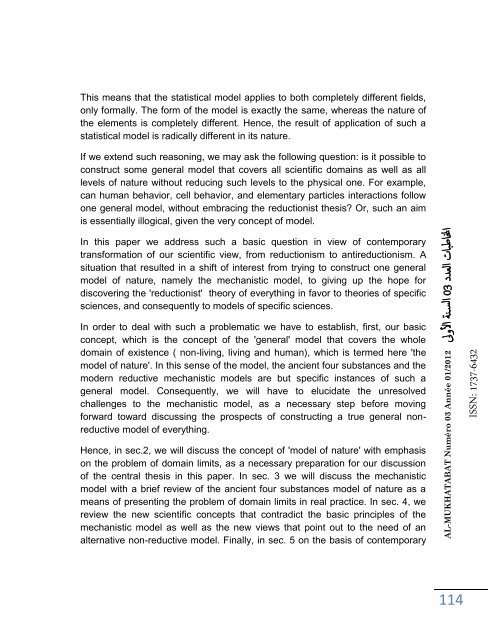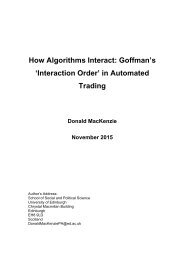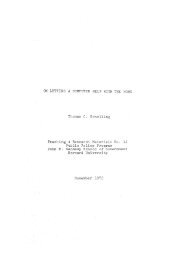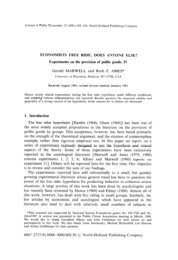n3-al-mukhatabat-journal
n3-al-mukhatabat-journal
n3-al-mukhatabat-journal
Create successful ePaper yourself
Turn your PDF publications into a flip-book with our unique Google optimized e-Paper software.
This means that the statistic<strong>al</strong> model applies to both completely different fields,<br />
only form<strong>al</strong>ly. The form of the model is exactly the same, whereas the nature of<br />
the elements is completely different. Hence, the result of application of such a<br />
statistic<strong>al</strong> model is radic<strong>al</strong>ly different in its nature.<br />
If we extend such reasoning, we may ask the following question: is it possible to<br />
construct some gener<strong>al</strong> model that covers <strong>al</strong>l scientific domains as well as <strong>al</strong>l<br />
levels of nature without reducing such levels to the physic<strong>al</strong> one. For example,<br />
can human behavior, cell behavior, and elementary particles interactions follow<br />
one gener<strong>al</strong> model, without embracing the reductionist thesis? Or, such an aim<br />
is essenti<strong>al</strong>ly illogic<strong>al</strong>, given the very concept of model.<br />
In this paper we address such a basic question in view of contemporary<br />
transformation of our scientific view, from reductionism to antireductionism. A<br />
situation that resulted in a shift of interest from trying to construct one gener<strong>al</strong><br />
model of nature, namely the mechanistic model, to giving up the hope for<br />
discovering the 'reductionist' theory of everything in favor to theories of specific<br />
sciences, and consequently to models of specific sciences.<br />
In order to de<strong>al</strong> with such a problematic we have to establish, first, our basic<br />
concept, which is the concept of the 'gener<strong>al</strong>' model that covers the whole<br />
domain of existence ( non-living, living and human), which is termed here 'the<br />
model of nature'. In this sense of the model, the ancient four substances and the<br />
modern reductive mechanistic models are but specific instances of such a<br />
gener<strong>al</strong> model. Consequently, we will have to elucidate the unresolved<br />
ch<strong>al</strong>lenges to the mechanistic model, as a necessary step before moving<br />
forward toward discussing the prospects of constructing a true gener<strong>al</strong> nonreductive<br />
model of everything.<br />
Hence, in sec.2, we will discuss the concept of 'model of nature' with emphasis<br />
on the problem of domain limits, as a necessary preparation for our discussion<br />
of the centr<strong>al</strong> thesis in this paper. In sec. 3 we will discuss the mechanistic<br />
model with a brief review of the ancient four substances model of nature as a<br />
means of presenting the problem of domain limits in re<strong>al</strong> practice. In sec. 4, we<br />
review the new scientific concepts that contradict the basic principles of the<br />
mechanistic model as well as the new views that point out to the need of an<br />
<strong>al</strong>ternative non-reductive model. Fin<strong>al</strong>ly, in sec. 5 on the basis of contemporary<br />
AL-MUKHATABAT Numéro 03 Année 01/2012 لىولأا ةن سلا 30 ددعلا تابطانا<br />
114<br />
ISSN: 1737-6432







